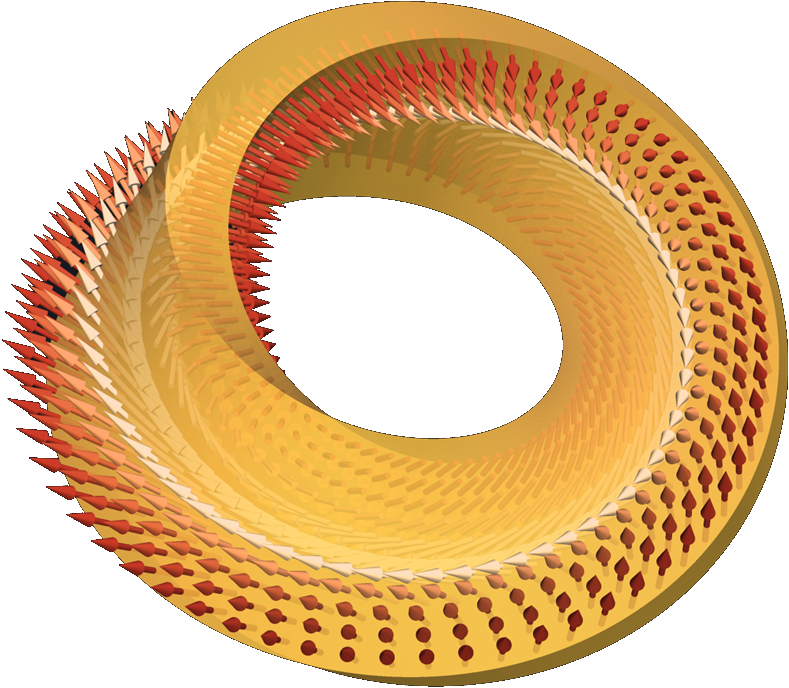Speaker
Description
Curvilinear geometry of magnetic films and wires enriches physics of their magnetic subsystems with a number of new effects. For example, magnon dispersion relation for a helix-shaped wire demonstrates a linear frequency shift typical for magnets with intrinsic Dzyaloshinskii-Moriya interaction (DMI) [1]; magnetic skyrmion can be stabilized on a spherical shell which is free of any intrinsic DMI [2]; localized curvilinear defect of magnetic film can create a strong pinning potential for a magnetic skyrmion and induce a discrete ladder of energy levels in the pinned skyrmion [3]. These and many other effects can be explained within the general framework [4,5], which introduces a number of curvature induced interactions. The latter are effectively generated by the common energy terms comprising spatial derivatives, e.g. in presence of the curvature the exchange interaction generates the effective DMI and anisotropy, the intrinsic DMI generates effective anisotropy.
Topological magnetic solitons (domain walls, skyrmions, vortices) in curvilinear geometries are of special interest because of the high potential for the spintronics applications. In addition to the curvature induced pinning [3, 6] and driving [7], the topological magnetic solitons in curvilinear systems demonstrate strong effects of chirality symmetry breaking, e.g. coupling of chiralities in spin and physical spaces for a domain wall on a Möbius strip [8], chirality-polarity coupling for a vortex on a spherical shell [9].
An inverse effect of the influence of the magnetic subsystem on the shape of an elastic magnet [10] opens a new area in curvilinear magnetism. The possibility to control the shape and mechanics of the magnet by means of its magnetization creates a promising tool for nanorobotics.
[1] D. Sheka et al., PRB 92, 054417 (2015).
[2] V. Kravchuk et al., PRB 94, 144402 (2016).
[3] V. Kravchuk et al., PRL 120, 067201 (2018).
[4] Yu. Gaididei et al., PRL 112, 257203 (2014).
[5] D. Sheka et al., J. Phys. A 48, 125202 (2015).
[6] K. Yershov et al., PRB 92, 104412 (2015).
[7] K. Yershov et al., PRB 98, 060409(R) (2018).
[8] O. Pylypovskyi et al., PRL 114, 197204 (2015).
[9] V. Kravchuk et al., PRB 85, 144433 (2012).
[10] Yu. Gaididei et al., PRB 99, 014404 (2019).

